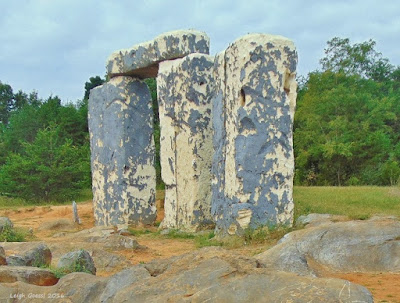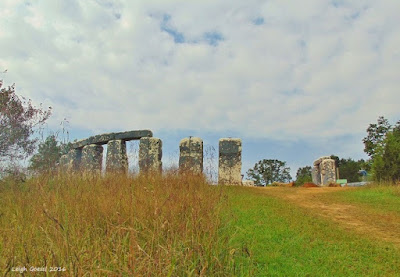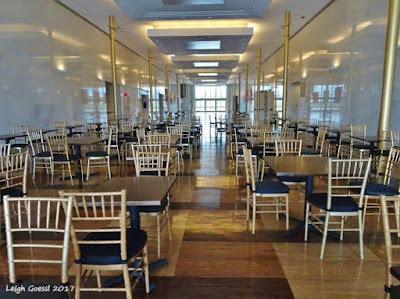The year 2017 marked the first of Foamhenge’s new home at Cox Farms in Northern Virginia. You might be asking yourself at this point, what in the world is Foamhenge?
If you haven't heard of it and are wondering, it’s a unique piece of art which is a life-sized foam reproduction of the historic Stonehenge in England.
Where did it come from? Who created it? How did it end up at Cox Farms? If you're still wondering, read on.
10 fun facts about Foamhenge
1. Foamhenge was built in 2004 by Rockbridge County-based artist Mark Cline of Enchanted Castle Studios. For more than a decade he maintained the unmarked, yet very popular, site which was located in Natural Bridge, Virginia.
2. Cline originally designed and built Foamhenge as an April Fool’s Day stunt. Cline has told the media he never thought it would last more than a year. Instead, it lasted for 12. And it wasn’t dismantled out of lack of interest either (the attraction gained a sort of a cult following over the years), it was a forced removal which took place in late August 2016.
3. The pieces that make up Foamhenge are made of beaded foam and weigh approximately 420 pounds.
 |
| Some pieces of Foamhenge |
4. Foamhenge was built by a small group of men and took six weeks to build. Cline was meticulous to ensure Foamhenge was an exact replica of Stonehenge, doing research to see that it was astronomically correct.
5. The foam was delivered from Winchester, Va. to Rockbridge County by tractor-trailer – it reportedly took four trips!
6. Over the years many people traveling through Virginia stopped at the Natural Bridge exit in search of seeing Foamhenge in person, myself included. I learned about it almost a decade into my Virginia residency. I made a stop to see it six months after I first heard about it. At the time, I didn't know it, but Foamhenge was literally in its last days at its original home at the Natural Bridge.
7. Despite no advertising, signage or anything indicating the big foam pillars stood just off the roadside, up a hill and behind some trees, Foamhenge ended up being featured on The Discovery Channel, Smithsonian Channel, TBS and MSNBC (and the Zippy the Pinhead comic strip too). Not bad for something that was originally a gag! Turned out Foamhenge was really good for local tourism.
 |
| At the old location, a short walk up the hill to Foamhenge |
8. A Merlin statue stood at the original site watching over Foamhenge.
9. Foamhenge was moved in late 2016 as the property it sat on was designated to become part of the new Natural Bridge State Park, which also had formerly been privately owned. Officials gave the reason that Foamhenge did not “fit” with Virginia’s state parks’ mission.
10. After many interested parties from various places in the United States expressed interest in acquiring the unique landmark, Cline ultimately decided to send it to Cox Farms. Cox has since moved it to its property in Northern Virginia.
There you have it – 10 fun facts about Foamhenge. If you want to see Foamhenge in person, you can see it at Cox Farms, which is located in western Fairfax County.
Cox Farms is a popular destination for locals and tourists, especially known for its’ phenomenal fall festival and Fields of Fear. Foamhenge made its debut at its new home on Sept. 16, 2017. It's available for visitors limited time frames during the winter, spring and summer (check the link above) but the ability to tour Foamhenge is included with admission to their fall festival.
Cox Farms is a popular destination for locals and tourists, especially known for its’ phenomenal fall festival and Fields of Fear. Foamhenge made its debut at its new home on Sept. 16, 2017. It's available for visitors limited time frames during the winter, spring and summer (check the link above) but the ability to tour Foamhenge is included with admission to their fall festival.








